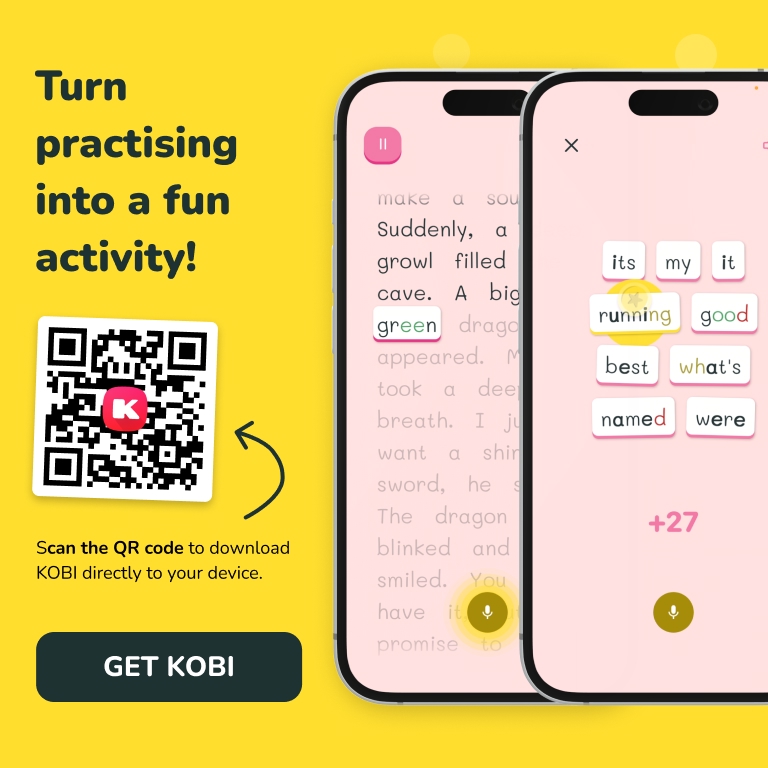Summary: What You’ll Learn in This Article
- Why blending and segmenting are crucial pre-reading skills
- What the Science of Reading says about phonemic awareness
- How small phonics habits support big literacy gains
- How KOBI builds these skills through real-time support
- Reflective prompts to help parents notice reading readiness
Ever Wonder Why Reading Still Feels Hard – Even After Phonics?
Your child knows their letters. They’re practicing phonics. But somehow, reading full words just isn’t clicking.
Sound familiar?
Often the missing link is blending – the skill of smoothly connecting sounds into words. It’s not just a nice-to-have; it’s foundational. And when it doesn’t come naturally, kids need extra support, not pressure.
Let’s explore how to build this micro-skill that leads to major reading breakthroughs.

Why Blending and Segmenting Matter: Science Says So
Phonemic awareness is the ability to hear, identify, and manipulate individual sounds in spoken words. According to the Science of Reading:
- Blending is the process of combining sounds (e.g., /c/ /a/ /t/ = cat)
- Segmenting is breaking a word into its sounds (e.g., dog = /d/ /o/ /g/)
- Mastery of these skills predicts early reading success (National Reading Panel, 2000)
- These skills can and should be taught explicitly
Ask yourself: Can my child blend simple words without guessing? If not, it’s time to zoom in on this micro-skill.

How KOBI Helps Kids Blend with Confidence
1. Hear It, See It
KOBI highlights each syllable or phoneme as it’s spoken, reinforcing sound-symbol connections.
2. Tap for Sound
Kids can tap tricky words to hear them broken into parts – then blended together. This builds awareness and memory.
3. Try It Yourself
With KOBI Together mode, your child is prompted to read aloud. They can use support or go solo.
4. WordBlaster Practice
Target tricky blends or review common ones with short, fun WordBlaster sessions.
5. Track and Repeat
Challenging words are stored in WordVault – perfect for repeat exposure and confidence building.
Bonus Feature: Magic Finger Mode
Helps kids track words as they blend – especially useful for early readers or those with attention challenges.
Tips for Parents: Supporting Blending Without Overwhelm
- Model Slowly: Say each sound, then blend: “/ssss/ /uuu/ /nnn/ – sun!”
- Play Sound Games: Ask, “What word do these sounds make? /b/ /a/ /t/.”
- Celebrate Tries: Blending is hard at first. Praise effort, not perfection.
- Mix it Up: Use real books, signs, and packages to spot blendable words.
- Reflect Together: “Which words were tricky today? Want to try them again tomorrow?”
Why Homeschoolers Love KOBI
- Built-in phonemic support for struggling blenders
- Multi-sensory feedback: hearing + seeing + speaking
- Zero-prep decoding help during real reading
- Empowers parents without extra teaching stress

Tiny Skills. Big Breakthroughs.
Blending and segmenting are small steps with a massive payoff. When these skills are supported – not rushed – kids gain the confidence to decode, read, and understand on their own.
KOBI gives them tools to practice blending with joy and structure – so those “aha!” moments come faster and more often.



